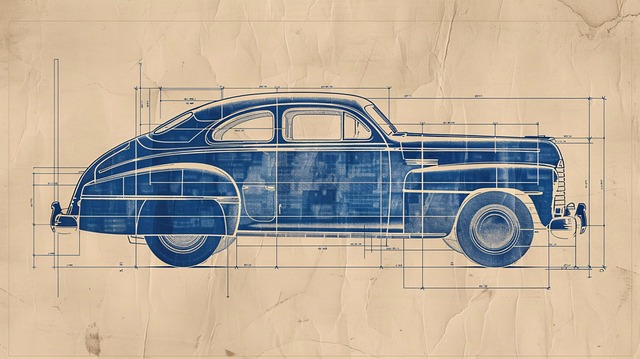Looking to register your car in California? This comprehensive guide will walk you through the process step-by-step. First, understand the state’s car registration requirements, including necessary documents for registration. Then, learn how to prepare for and undergo vital dmv vin verification. Next, follow a simple application process and pay associated fees to receive your vehicle’s license plate. Streamline your car registration in California with this essential roadmap.
- Understand California Car Registration Requirements
- Gather Necessary Documents for Registration
- Visit Your Local DMV for VIN Verification
- Complete the Registration Application Process
- Pay Car Registration Fees and Receive Your Plate
Understand California Car Registration Requirements

Before registering your car in California, it’s crucial to understand the state’s specific requirements for vehicle registration. The California Department of Motor Vehicles (DMV) mandates several key steps and documents to ensure proper vehicle identification and ownership verification. One of the most critical processes is the DMV VIN (Vehicle Identification Number) verification, which establishes the authenticity of your car. This involves providing accurate and up-to-date information about your vehicle, including its make, model, year, and unique VIN number.
Additionally, consider opting for a convenient mobile VIN verification or vin inspection service, especially if you’re busy or face challenges visiting a DMV office. These services allow for remote checking of your car’s registration status and history through advanced technology, making the registration process smoother and potentially saving valuable time. Ensure that all documents are in order to avoid delays during the registration process.
Gather Necessary Documents for Registration

Before you start the registration process, ensure you have all the essential documents. The California Department of Motor Vehicles (DMV) requires several key pieces of information for a successful car registration. One crucial document is the Vehicle Identification Number (VIN) verification report, which can be obtained through a mobile vin inspection or by visiting a DMV office. This process involves checking the VIN on the vehicle against the manufacturer’s records to ensure it matches and there are no outstanding issues.
Additionally, you’ll need your vehicle’s registration from the previous state (if applicable), proof of insurance, and a valid driver’s license. It’s also recommended to bring along any other relevant paperwork that might be specific to your vehicle, such as service records or warranty information. Having these documents ready ensures a smoother registration process at the DMV.
Visit Your Local DMV for VIN Verification

Before you can register your car in California, it’s crucial to have your Vehicle Identification Number (VIN) verified by your local Department of Motor Vehicles (DMV). This process ensures that your vehicle meets all safety and emissions standards required by the state. The DMV will cross-reference the VIN with their records to confirm the vehicle’s identity and history, which is essential for ensuring roadworthiness and preventing fraud.
You can schedule a traditional appointment or opt for a more convenient mobile vin verification service if available in your area. A mobile vin inspection typically involves a DMV inspector coming to your location to perform the check using specialized equipment. This option is particularly useful for individuals with busy schedules, as it saves time and effort compared to visiting the DMV in person for a standard vin inspection.
Complete the Registration Application Process

After gathering your necessary documents, it’s time to complete the registration application process with the DMV. Start by filling out Form DV-140, the Vehicle Registration Application. This form requires detailed information about your car, including its make, model, year, and VIN (Vehicle Identification Number). Accurate VIN input is crucial for successful vin verification, which is a key step in the registration process.
Next, submit any required fees along with your application. You can typically do this at a local DMV office or, for added convenience, utilize a mobile vin verifier to conduct both the VIN inspection and fee payment simultaneously. This streamlined approach saves time by eliminating the need for separate visits and paperwork, making it easier than ever to register your vehicle in California.
Pay Car Registration Fees and Receive Your Plate

After completing your car’s registration application at the DMV or through their online services, the next step is to pay the required fees. These include the vehicle registration fee and a emissions/air quality fee, which vary based on your vehicle type. Once your payment is processed, you’ll receive your unique California license plate. This process often involves a VIN (Vehicle Identification Number) verification, typically done by a mobile vin verifier or through a simple online check to ensure the vehicle’s history and identity match the registration details.
Ensure that all information provided during the vin inspection matches precisely with your car’s documentation to streamline this step. Remember, accurate and up-to-date records are essential for a smooth DMV experience. You can opt for various payment methods, including credit cards or checks, as accepted by the California DMV, to finalize your car’s registration and obtain your new license plate.
Registering a car in California involves understanding state requirements, gathering essential documents, and completing a straightforward application process. After passing the necessary VIN verification at your local DMV, you’ll pay the corresponding fees and receive your vehicle’s license plate. This efficient system ensures that California drivers comply with regulations while enjoying the convenience of a seamless registration experience.
